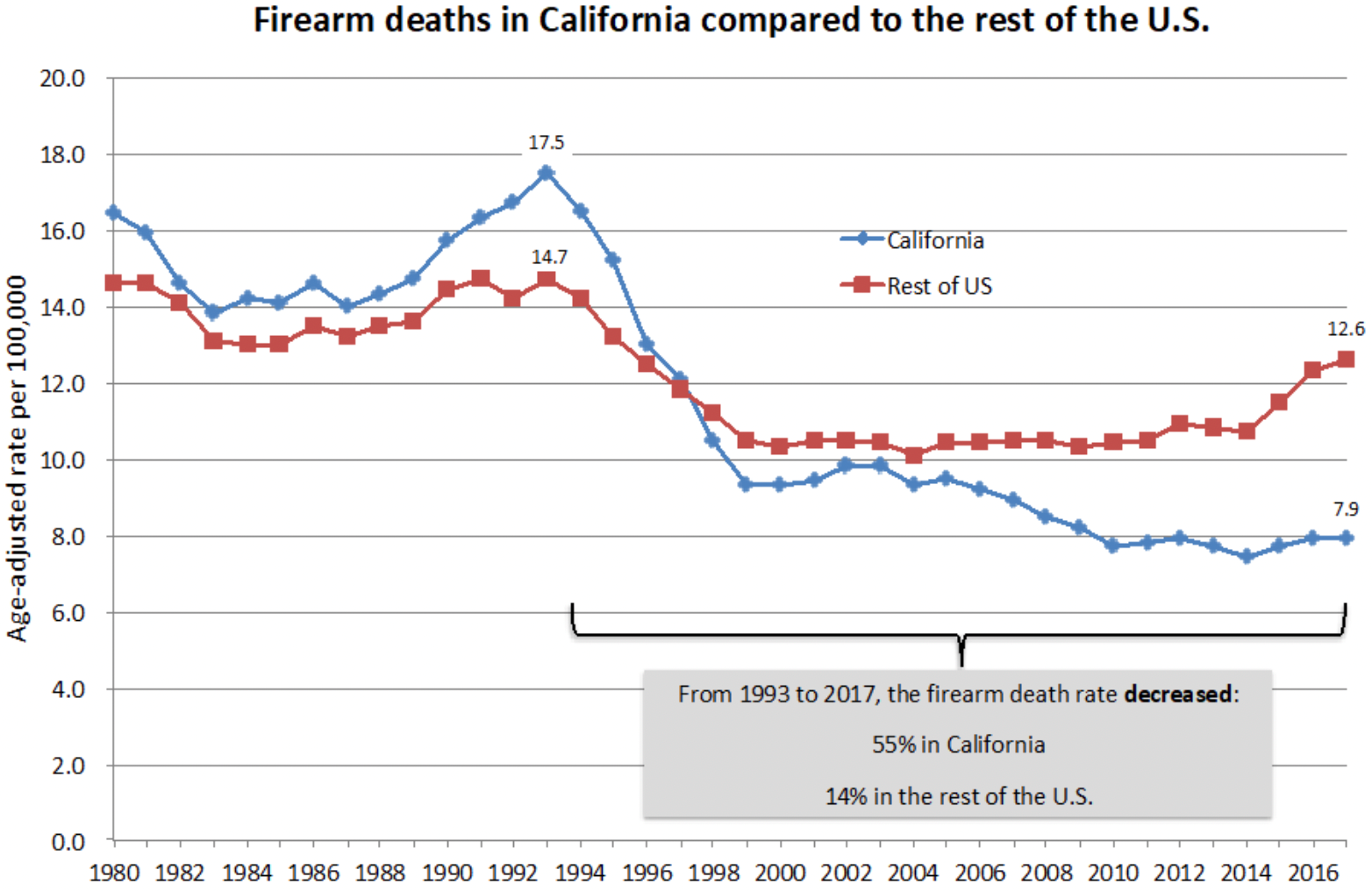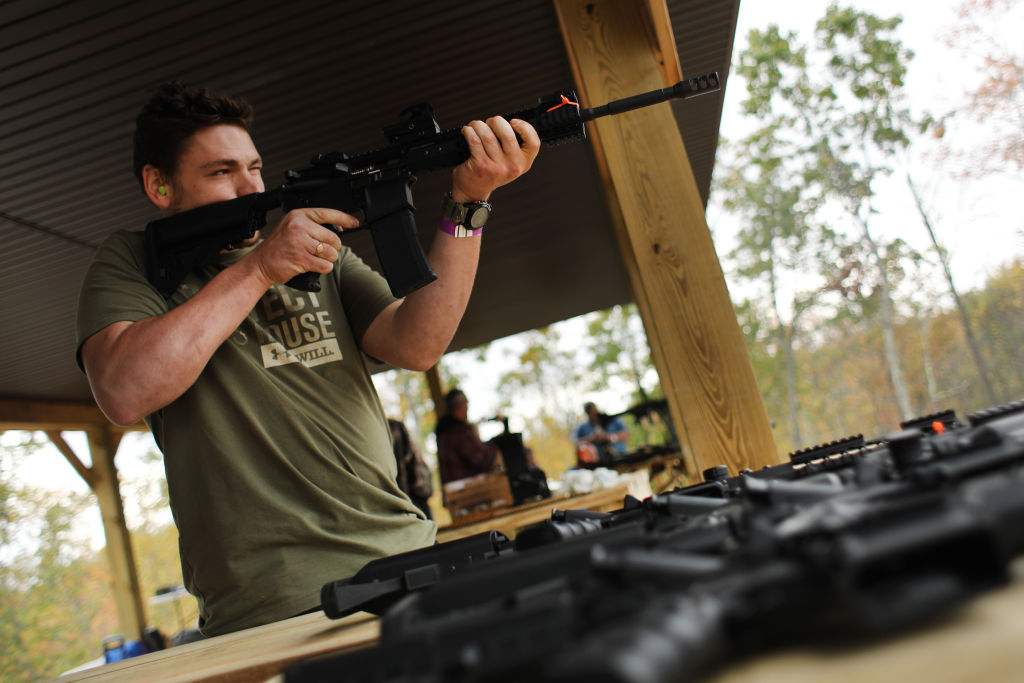Arming America (With Information)
When it comes to gun laws, the power of rhetoric is greater than reason, but gun violence, like almost all problems, is a mathematical one and will require a more nuanced approach.
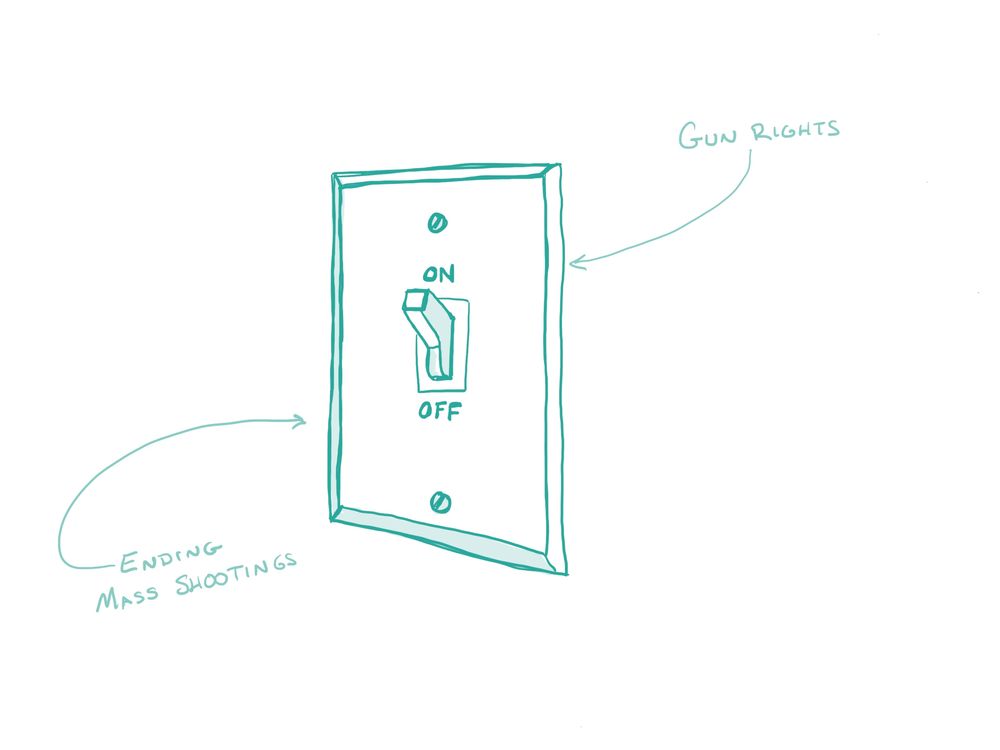
As an engaged citizen, I've had several conversations regarding gun control, and if you're anything other than a sheltered homeschooler, you probably have too. The latest run of mass shootings and the gun safety bill that Congress recently passed have made the American Pastime of gun violence the topic of conversation once again.
As much as I relish the depth of conversation one may have with a shrewdness of apes; generally, I find myself with common Americans. As usual, I take a both-side-ism approach where my answer to almost any policy question is, "Well it depends." This makes it hard to win an argument, although I'm up for the challenge. More importantly, it makes it impossible to lose one – because everything always depends.
At least half of these conversations have been heated. I just mean because I'm having these conversations with myself in a hot shower as well, a perfect place to work out all of life's kinks. Suffice it to say, I've been thinking about this a lot, and I agree that we have a problem, but we haven't quite managed to get much in the way of a leading solution. At least not one that will have much impact, given that we're too busy complaining about inflation to be bothered with reducing human suffering or deaths. And why would you, if that means giving up your guns? Without an armed public, you run the risk of the government deciding to declare martial law so they can take away all of our rights while preventing us from hunting for wild bore with our machine gun. (Or, for some people, hunting for Mike Pence if in season).
When it comes to gun safety or the lack thereof, we are all but at an impasse in the United States. We have a tough choice. Do we outlaw guns entirely or do we pass them out in schools?
Nothing stops a bad 18-year-old with a gun like a good 4th grader with a gun, but it's been hard to get enough guns into the hands of good primary schoolers – what with our recent supply chain woes. Besides, we'd have to reformat their Osh-Kosh bib overalls to conceal their personal protection properly and make sure the weapon is easy to access in the likely event of a school shooting.
With that said, it seems like the far side of the liberal viewpoint would have you believe that even the police shouldn't have a gun of their own (and who knows, they can't seem to keep from shooting the wrong guy in traffic stops these days, so it's hard to say whether our officers in blue need to be in timeout anyway).
While there are nuanced voices in the conversation (usually at some institute of very important studies) the bar-top conversations tend to be much more simple, often focusing on binary terms.
On the one hand, we need to end school shootings by getting rid of big guns. On the other, we need to protect the rights of citizens so they can invade the Capitol in case of emergencies.
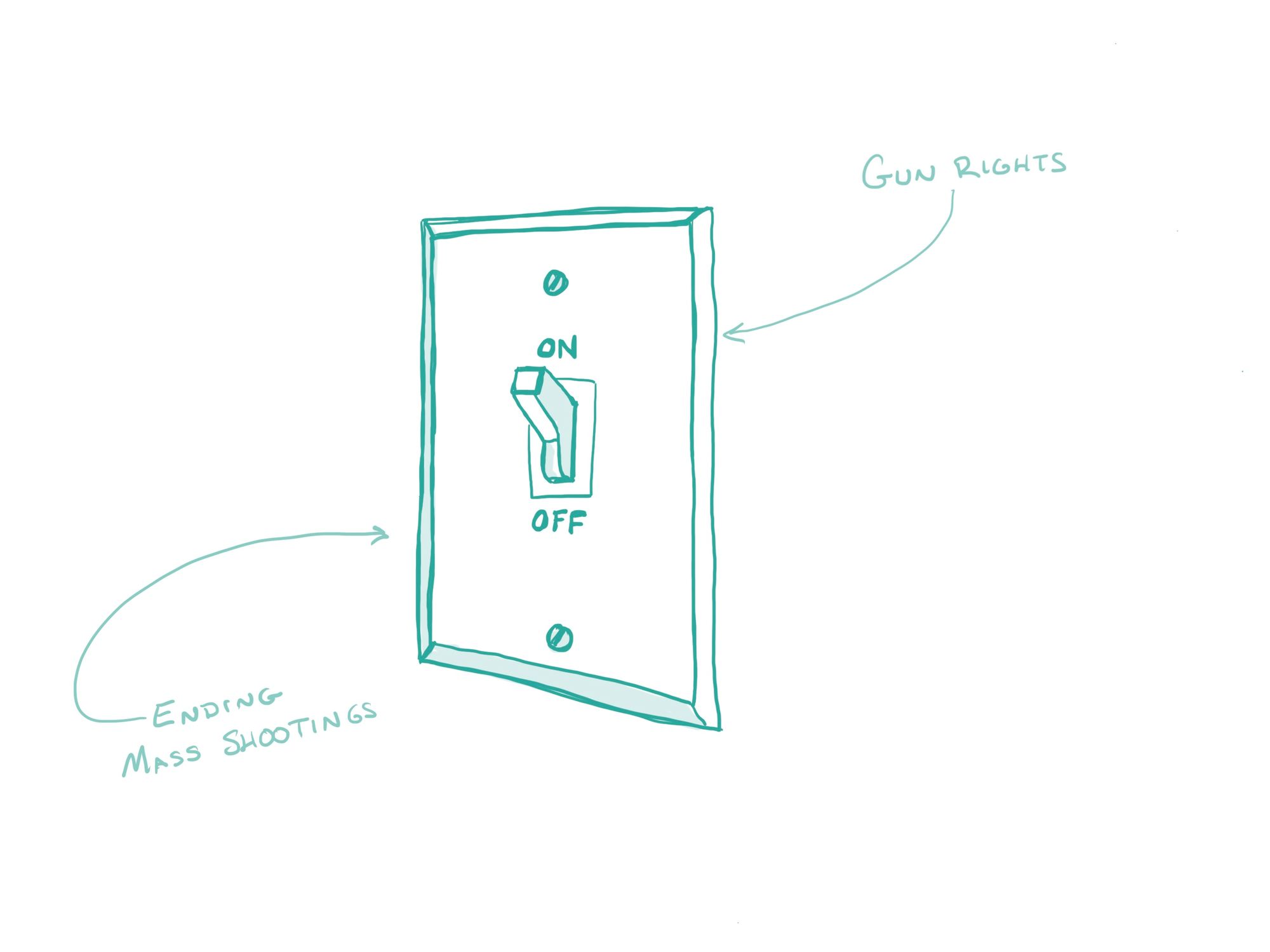
When it comes down to it, I think we're dealing with a mathematical problem, and while apes don't tend to be good at math, common Americans usually are familiar with the subject. I'd say our gun debate is more like one of those word problems where two trains are colliding toward each other at different speeds from opposite directions, but we tend to talk about it like it is a problem with two options. It goes like this.
- Side A says that Z results in K so we should X out all the Zs.
- Side B says if you're going to X,... Y 'Z' if Z is our right? We'd rather X 'U'.
To translate, the movement acting to address gun violence (normally pronounced "liberals") presents a narrative that paints guns as our enemy and suggests outlawing assault rifles and high-capacity magazines – and they impose a litany of other hoops to gun access normally reserved for voter suppression and the BMV. But they fail to address the additional problems that come as a result. Of course, the rhetoric inflames the pro-gun constituency, rendering the 40,000 gun deaths per year as the collateral damage of protecting the second amendment. As a result, gun sales spike.
So if we assume Z is a constant, does Z + X = (-K)?
Worse yet, what if Z + X = some decrease in K but an increase in C? Countless researchers have studied this topic, and the results are pretty conclusive. We can all make up our own stories about gun violence. We do have some useful data, but it can get murky. We all told our teachers we would never use algebra ever, and I'm sure we all meant it, but problems like this have forced our hands. Let's dive in.
To understand the problem we are dealing with, we have to remove our emotional response associated with the components of the problem. For starters, some people love guns, but some find them terrifying. Some people are Ted Cruz, and everything they say will be dismissed out of hand, while others will change the subject and say "But what about Hunter Biden's laptop". As you may recall, when you studied math in high school, there were only two things that engaged your emotions, with one being the frustration that you have to do math at all, knowing you're never going to use algebra ever, and the other is that tingly feeling you got from your high school sweetheart across the classroom. You were never a partisan hack.
As adults in Congress (if we can call people in Congress adults), it is unlikely the Democrats and Republicans are arguing about whether or not E actually equals MC squared or not. They just kind of accept it for what it is, and instead argue about whether or not someone should have consequences for breaking the law while President.
We need a clean slate to truly review the problem. Here's the ingredients.
- Z is a useful thing that has some risks.
- X is some kind of regulation or law, draconian or otherwise.
- K is the undesirable outcome like gun killings (+ for more or - for less)
- Finally, C is the unintended consequence (also +/-).
Automobile deaths
Every year, we have about 40,000 deaths in motor vehicle accidents. That means vehicles are dangerous. Should we make cars illegal? Well as a math issue, the answer is "it depends". Here's why.
Because Z + X = -K without question but it also means +C.
If we have more access to Z, we'll end up with a lot of K, but no C. If we don't have enough access to Z, then we'll have too much C and no K, both of which are bad. That's because this is not a binary solution, so we need to look at X as a continuum on a bell curve. It looks somewhat like this.
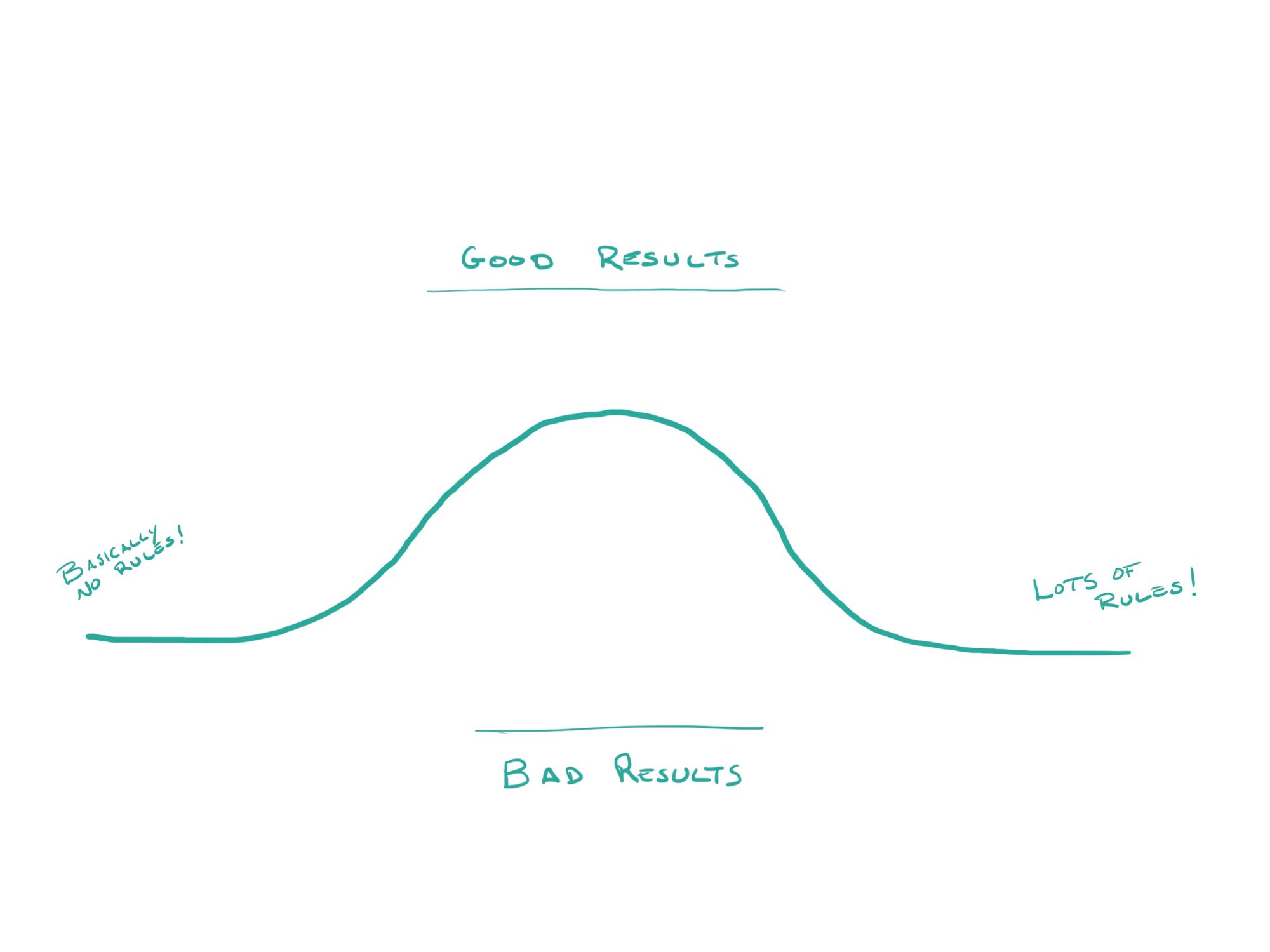
But X is not just an on or an off switch. It's a continuum. Furthermore, X can come in different forms, like Xa, Xb, and Xj, representing differing specific areas where X is focused.
No cars at all would result in limits on our access to opportunity (Ca), shipping food and other essential goods would be harder to come by (Cb), and I'd be late getting home pretty much always because of travel time (Cjkl). Clearly, C (no transportation) is not good, but neither is K (vehicle deaths), so we're going to have to look at this with more nuance to get the best results. Studies show us that seatbelt use (Xb) results in fewer vehicle deaths, even if they result in a little bit of chafing in certain accidents (Cy).
Let's look at this on a graph.
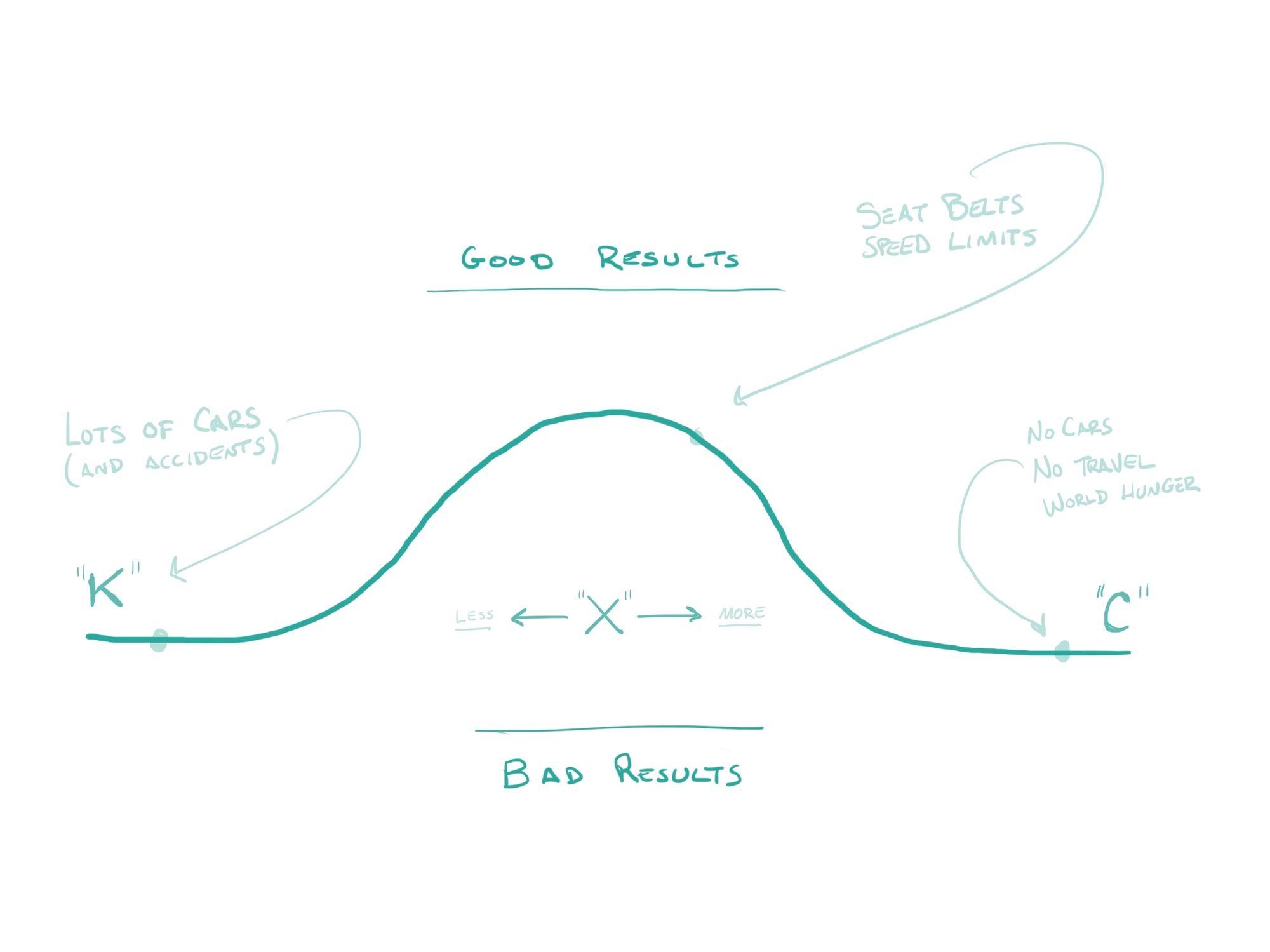
As you can see, if you don't have enough X, you have problems. If you have too much X you end up with another kind of problem. Finding the right balance of X is where the best outcomes are, keeping in mind that Xn may be the best version of X or a combination of multiple approaches to X. Put another way, should we make cars illegal, or should we just require manufacturers to make your vehicle beep until it breaks you of your will to exercise your right as a private citizen to not buckle your seatbelt, ultimately saving lives? According to studies on seatbelt use and effectiveness, the beeping is working.
Alcohol and Prohibition
We've tested the draconian approach as well, landing all the way on the right side of the bell curve. One of the better examples of this was the era of prohibition under the Volstead Act in 1920 (X) which prohibited the production, use, and sale of alcohol (Z).
Famously, it didn’t go very well, despite the great storylines for television. The blue laws, I could do without. What we found as a nation is that with too much X, people wanted Z anyway, and it resulted in a black market and crime rings (Murderers, thugs, really fast gangster cars. Basically a lot of C). When we wised up as a nation, we repealed the amendment creating a more nuanced form of X, but specifically Xa and Xb laws such as regulating the production and safety of products and taxing the sale. We still see a little bit of K, but we can accept it because we have plenty of good results and relatively little C.
It usually takes a little politics to get there, which usually involves compromise, and usually less-than-perfect results. That looks about like this:
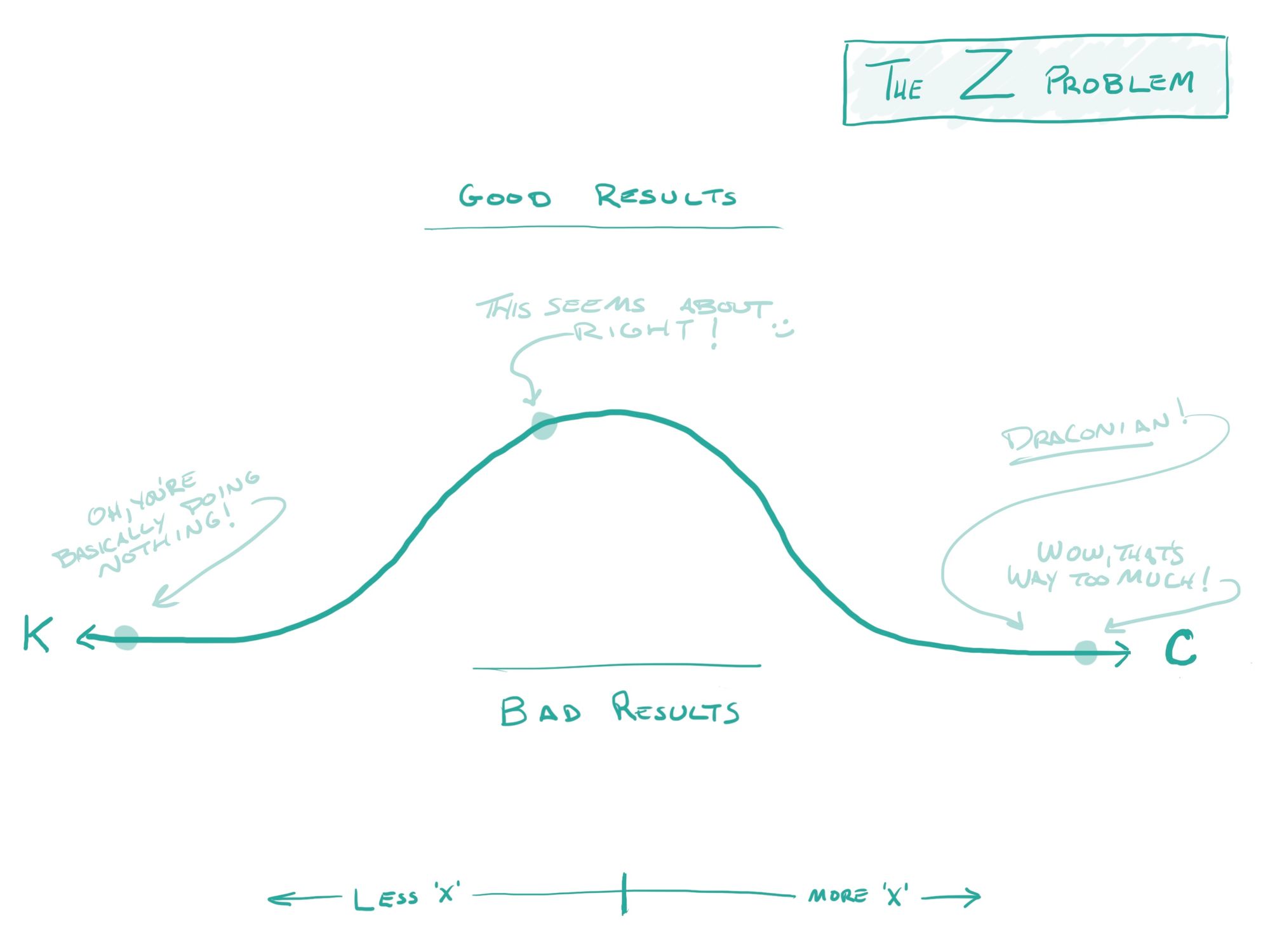
The Tyrannical Government Problem
Part of the looming worry of gun rights activists is the concern that we citizens will be at risk of being taken over by a tyrannical government. Setting aside how implausible that is, we obviously don't want to risk the Government declaring marshall law and taking away all of our rights, forcing us to live in concentration camps on a steady diet of government cheese. Fortunately, just like our prior examples, being tyrannical is not that simple either. To engage in tyranny as a leader of a government, you will have to take into consideration the very same mathematical considerations that we've been talking about.
If Z is citizens having liberty, and X is the scale of tyrannicalness, then both K and C outcomes are at play. Whether or not citizens have amassed guns will not be the only factor (assuming enough of them made it out of school alive, to begin with). This was demonstrated by our most recent uprising against our government, where social media, large crowds, and moose horn headdresses were also a factor, not to mention voting. But before we worry too much about this, perhaps we citizens should do some thinking of our own and identify what an actual tyrannical government looks like. Since this currently sounds like a cartoon (and many would agree that our tyrannical head of state during the January 6th protest was one), we need to find a little bit more clarity on what makes a tyrannical government and whether guns will matter in that scenario. In other words, the revolutionary will need to consider their K and C outcomes as well.
Everything is Math
The public side of politics would have you think that it’s our side against theirs (and mostly it is), but you can’t make a pie out of salt – and you don’t want a pie without some. If Z equals salt, and X is your measure, getting X right allows for the most flavor and enjoyment.
The same is true for gun regulation. Gun advocates want gun access to be unencumbered as a right. Gun safety advocates look to ban some or, in some cases, all guns. While this is far easier to fit into a stump speech, I think this is the wrong approach in practice. The bigger problem is the level to which most people are blind to the nuances of the other side of the argument, resulting in an impasse.
All of our controversial issues are just like this. A math problem that has been trapped in partisan binaries. Prohibition does not work. Neither do laissez faire policies. It's simply not worth the suffering that comes from unregulated access, but the unintended consequences of pure prohibition will be just as undesirable.
We can see that "Z" is a constant in our scenario as it stands today. The solution is somewhere in between.
Sources

/200190505-001-56a9a5df3df78cf772a934f6.jpg)
